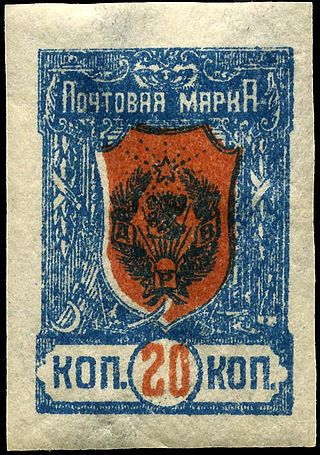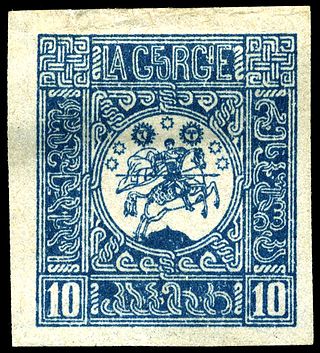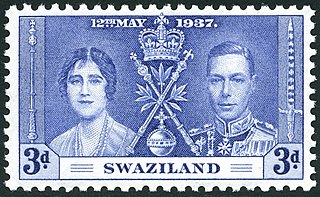
Philately is the study of postage stamps and postal history. It also refers to the collection and appreciation of stamps and other philatelic products. While closely associated with stamp collecting and the study of postage, it is possible to be a philatelist without owning any stamps. For instance, the stamps being studied may be very rare or reside only in museums.

Philatelic literature is written material relating to philately, primarily information about postage stamps and postal history.

Indian postal systems for efficient military and governmental communications had developed long before the arrival of Europeans. When the Portuguese, Dutch, French, Danish and British conquered the Marathas who had already defeated the Mughals, their postal systems existed alongside those of many somewhat independent states. The British East India Company gradually annexed the other powers on the sub-continent and brought into existence a British administrative system over most of modern-day India, with a need to establish and maintain both official and commercial mail systems.

The native states of India, also known as feudatory or princely states, were typically vassals under a local or regional ruler who owed allegiance to the British Raj. There were about 675 native states in all but many were not parts of British India proper because they never become possessions of the British Crown; rather, they were tied to it in a system of subsidiary alliances. Following the Partition of India in 1947, the suzerainty of the Raj was terminated and native states had to choose between independence or formal accession by either India or Pakistan. In practice, all of the native states had acceded or been annexed by the end of 1949.

The Far Eastern Republic, sometimes called the Chita Republic, existed from April 1920 to November 1922 in the easternmost part of Siberia. It was formed from the Amur, Transbaikal, Kamchatka, Sakhalin, and Primorye regions. In theory, it extended from Lake Baikal to Vladivostok but, in May 1921, the Priamur and Maritime Provinces seceded. Although nominally independent, it was largely controlled by the RSFSR and its main purpose was to be a democratic buffer state between the RSFSR and the territories occupied by Japan during the Russian Civil War to avoid war with Japan. Initially, its capital was Verkhneudinsk, but from October 1920 it was Chita. On 15 November 1922, after the war ended and the Japanese withdrew from Vladivostok, the Far Eastern Republic was annexed by Soviet Russia.
Each "article" in this category is a collection of entries about several stamp issuers, presented in alphabetical order. The entries are formulated on the micro model and so provide summary information about all known issuers.

The postage stamps of Ireland are issued by the postal operator of the independent Irish state. Ireland was part of the United Kingdom of Great Britain and Ireland when the world's first postage stamps were issued in 1840. These stamps, and all subsequent British issues, were used in Ireland until the new Irish Government assumed power in 1922. Beginning on 17 February 1922, existing British stamps were overprinted with Irish text to provide some definitives until separate Irish issues became available. Following the overprints, a regular series of definitive stamps was produced by the new Department of Posts and Telegraphs, using domestic designs. These definitives were issued on 6 December 1922; the first was a 2d stamp, depicting a map of Ireland. Since then new images, and additional values as needed, have produced nine definitive series of different designs.

Mauritius, a small island in the southwest Indian Ocean, is important to the world of philately for a number of reasons. Its first two postage stamps issued in 1847, called the "Post Office" stamps, are of legendary rarity and value. They were the first stamps issued in any part of the British Empire outside of Great Britain. The unique cover bearing both “Post Office” stamps has been called "la pièce de résistance de toute la philatélie" or "the greatest item in all philately". The cover was sold at auction, in Zurich, on 3 November 1993, for 5.75 million Swiss francs, the equivalent of about $4 million – the highest price ever paid for a single philatelic item up to that time. In addition, Mauritius is well known for the subsequent locally produced issues known as "primitives," also prized by collectors.

The postage stamps and postal history of Christmas Island, in the Indian Ocean, was linked to its original economic situation until 1993. Mainly ruled by a phosphate production commission, the island was part of the British Straits Settlements colony from 1901 to 1942, then of Singapore from 1946 to 1958. Although it was placed under Australian control in 1958, the island remained postally and philatelically independent until 1993 when Australia Post became the island's postal operator.

The postage stamps and postal history of Azerbaijan describes the history of postage stamps and postal systems in Azerbaijan, which closely follows the political history of Azerbaijan, from its incorporation to the Russian Empire in 1806, to its briefly obtained independence in 1918, which it lost to the Soviet Union in 1920 and re-acquired in 1991 after the fall of the Soviet Union.
Society for Czechoslovak Philately (SCP) is a philatelic organization dedicated to the collection and study of the postage stamps and postal history of Czechoslovakia, the Czech Republic and Slovakia.
Otto Hornung was a distinguished philatelist and philatelic journalist who won Gold medals at several philatelic exhibitions and was a Fellow of The Royal Philatelic Society London. He signed the Roll of Distinguished Philatelists in 1993 and lived in Wembley, London.
This is a survey of the postage stamps and postal history of Brunei.

This is a survey of the postage stamps and postal history of Georgia.

This is a survey of the postage stamps and postal history of Slovakia.

This is a survey of the postage stamps and postal history of Czechoslovakia.

This is a survey of the postage stamps and postal history of Ukraine.

This is a survey of the postage stamps and postal history of Saint Helena.

This is a survey of the postage stamps and postal history of Eswatini, formerly Swaziland.

The Halfpenny Yellow is the first postage stamp issued by the Crown Colony of Malta. Depicting Queen Victoria, it was only valid for local postage and it was originally issued on 1 December 1860. It was the only stamp issued by Malta for two and a half decades, and during this period various reprints were made with differences in colour shade, perforation and watermark. When control of Malta's postal service was transferred to the island's colonial government on 1 January 1885, the stamp was withdrawn and it was replaced by a set of definitive stamps.
















